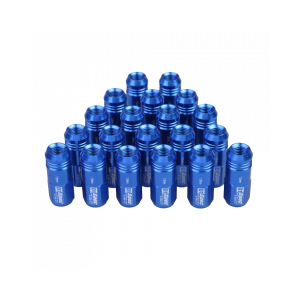Dec . 04, 2024 21:09 Back to list
14x28x7 oil seal
Understanding the 14x28x7 Oil Seal A Comprehensive Overview
Oil seals are crucial components in mechanical engineering and automotive applications. They play a vital role in preventing the leakage of lubricants while safeguarding machinery from dirt, dust, and other contaminants. Among the various standard sizes and types of oil seals available, the 14x28x7 oil seal stands out due to its specific dimensions and compatibility with various equipment. In this article, we will delve into the characteristics, applications, and selection criteria for the 14x28x7 oil seal.
Dimensions and Composition
The designation 14x28x7 refers to the dimensions of the oil seal in millimeters. The first number, 14 mm, represents the inner diameter (ID), the second number, 28 mm, is the outer diameter (OD), and the third number, 7 mm, signifies the width of the seal. These measurements make the 14x28x7 oil seal suitable for various applications, particularly where space is limited but adequate sealing efficiency is required.
Typically, oil seals are made of rubber or thermoplastic materials, providing flexibility and durability. Common materials used include nitrile rubber (NBR), fluorocarbon rubber (FKM), and silicone. Each material has distinct properties that can withstand different temperature ranges, chemical exposures, and pressures, making it essential to choose the right composition based on the operating environment.
Role and Functionality
The primary function of the 14x28x7 oil seal is to prevent lubricant leakage from rotating shafts in machinery
. It creates a barrier that seals lubricants such as oil or grease, ensuring that they stay within the system and maintain optimal performance. In addition to preventing leakage, oil seals also minimize the ingress of dust, dirt, and moisture, which can significantly harm mechanical parts and lead to premature wear or failure.The seal usually consists of a rubber body with a metal casing that provides structural integrity and support. A lip or sealing edge is positioned on the inner diameter to make contact with the rotating shaft, creating a tight seal that reduces friction and wear. The design of the sealing lip may vary, with options including single lip and double lip configurations, depending on the specific application requirements.
14x28x7 oil seal

Applications
The 14x28x7 oil seal is widely used in various industries, including automotive, industrial machinery, and agricultural equipment. In automotive applications, it can be found in engines, transmissions, and wheel hubs, where it helps maintain the functionality and longevity of essential components. Industrial machinery often employs these seals in hydraulic systems, compressors, and pumps, facilitating the smooth operation of various manufacturing processes.
In agricultural equipment, oil seals play a vital role in maintaining the efficiency of tractors, harvesters, and other machinery. Ensuring that equipment operates without lubrication loss can significantly enhance productivity and reduce downtime for maintenance.
Selection Criteria
When selecting an oil seal, several factors must be considered to ensure optimal performance. First, it is crucial to confirm the dimensions; the 14x28x7 designation fits specific assembly requirements. Additionally, the working environment must be assessed, including temperature ranges, fluid compatibility, and the presence of contaminants.
Beyond compatibility, the design of the sealing lip can significantly influence performance. Users must evaluate whether a single or double lip design is more suitable for their applications based on the expected exposure to contaminants and the desired level of sealing performance.
Conclusion
The 14x28x7 oil seal is a critical component that ensures the efficient operation of various mechanical systems. By choosing the right oil seal, industries can enhance equipment longevity and performance while minimizing maintenance and operational costs. The correct understanding of its design, functionality, and applications can help engineers and technicians make informed decisions in their respective fields. As technology continues to evolve, the importance of selecting the right oil seal becomes increasingly paramount in maintaining the reliability and efficiency of machinery.
-
The Trans-formative Journey of Wheel Hub Oil Seals
NewsJun.06,2025
-
Graphene-Enhanced Oil Seals: Revolutionizing High-Pressure Oil Sealing
NewsJun.06,2025
-
Future of Hydraulic Sealing: Advanced Intelligent TCN Oil Seals
NewsJun.06,2025
-
Don’t Let a Broken TCV Oil Seal Ruin Your Day
NewsJun.06,2025
-
Bio-Inspired Dust Seals for Better Sealing Performance
NewsJun.06,2025
-
Biodegradable and Sustainable Hydraulic Seal Materials
NewsJun.06,2025
-
Top Oil Seal Solutions for Your Industrial Needs
NewsMay.22,2025
Products categories
















